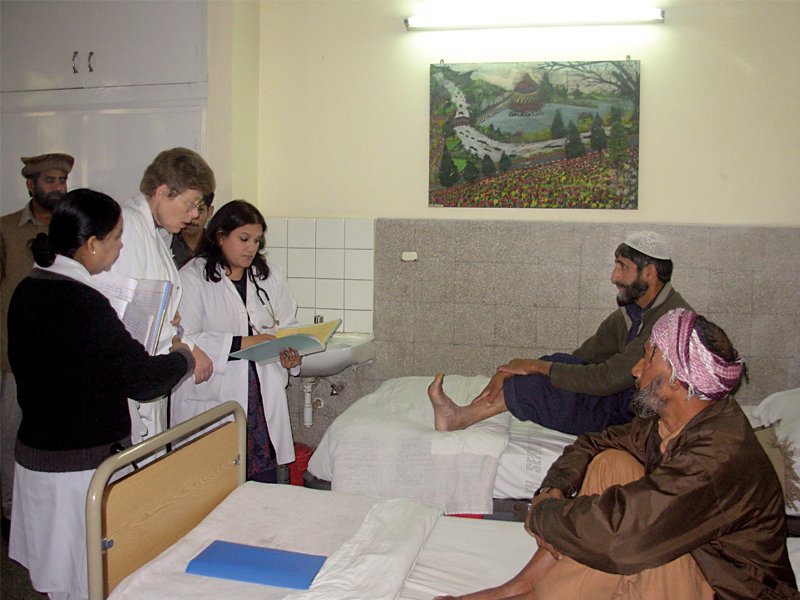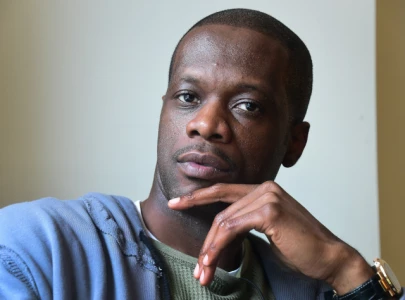
Schmotzer, the Medical Director at Aid to Leprosy Patients (ALP) Hospital Rawalpindi, is concerned about the consistent increase in TB cases being reported in the country. Referring to a World Health Organisation report issued in 2010, she said that out of 0.413 million patients in the country, 0.3 million were suffering from TB. The report further indicates that Pakistan moved up two spots to sixth in the list of countries with the highest number of TB patients in the world.
She said it is imperative that family members of TB patients go for check-ups. On the other hand, she said leprosy is “slightly” infectious and can be cured with an early diagnosis. In 1988, when she started her services, there were over 1,500 leprosy patients in the country, a figure that has been whittled down to around 400.

In treating the infectious diseases, she said awareness is key and timely precaution can help prevent organ malfunction or even fatality. To disseminate vital information and reduce the risk, she recommends holding awareness campaigns through the media besides conducting seminars, workshops and lectures.
“Pakistanis are hardworking and hospitable. But often, they are not disciplined in taking their medicines,” she said.

The Christusträger-sisterhood is active in Germany and different southern countries. Pakistan is their first country of employment. Due to their commendable services, they are known as “the Pindi-sisters” in Pakistan. Schmotzer is one of three German sisters who have been tending patients for the last 25 years.
Facilities at the hospital
The Leprosy Control Programme in Pakistan is a joint venture of the provincial health department and the Aid to Leprosy Patients. The hospital has also integrated leprosy control into its general services. The programme deals with tuberculosis, skin problems, blindness, psychotherapy and rehabilitation. The hospital has several departments operating with the latest equipments including a skin clinic, orthopedic shoe shop, physiotherapy department, eye clinic, Educational Institute Charity and a social department. Brief details of the departments are given below.
General Skin Clinic
The hospital has a General Skin Clinic which is open for three days a week where leprosy is treated along with other diseases which are detected in the early stages.
Orthopedic shoe shop
There is an orthopedic shoe shop in the hospital where shoes are made to fit deformed feet and to help prevent further deformity. The Surgical Unit has been operational since 1968.
General Physiotherapy Department
The hospital’s General Physiotherapy Department, equipped with the latest facilities, has been operational for the last few years.
Eye clinic
The hospital has an eye clinic which was introduced in 1995. During the last three years, the clinic has treated about 260,000 eye patients.
Educational Institute Charity
Due to the stigma attached to leprosy patients, the sisters have also taken up the responsibility of grooming them. For this purpose, they have established a separate branch called the Educational Institute Charity. Currently, 250 children are receiving support in their schools.
Social department
The ALP established a social department in the hospital for the rehabilitation of cured patients. The patients are visited at home, with each individual’s needs addressed through recommended and implemented rehabilitation steps.
Background
Rawalpindi has the oldest leprosy hospital which was set up in 1904 by the British Leprosy Mission. The hospital was the idea of an American professor, Dr R. R. Stewart, who had come across a group of lepers who lived in the outskirts of Rawalpindi — the British Lepers Act of 1827 mandates that all lepers be segregated from the rest of the community. Initially, a home was established for healthy children born to leprosy patients in the hospital. However, the home closed down when the method of leprosy treatment changed in the early 60s. Later, the American Mission had also built asylums for leprosy patients. However, these asylums were either closed down or converted into hospitals when the cure for leprosy was discovered in 1948.
Important events
The hospital was set up in 1904 by the British Leprosy Mission
In the late 1930s, a home was established for healthy children born to leprosy patients in the hospital.

In 1965, the hospital started working as a referral centre for leprosy patients in the Punjab, Azad Jammu and Kashmir, parts of Khyber-Pakhtunkhwa and other northern areas
In 1968, ALP took over the Rawalpindi Leprosy Centre under the aegis of the German Leprosy Relief Association
In 1970, the Rawalpindi Leprosy Hospital was working with a 40-bed unit for short-term admissions
In 1972, the General Skin Clinic was introduced, treating patients of leprosy and other diseases and operated three days a week
In 1981, a General Physiotherapy Department started working at the hospital
In 1986, an orthopedic shoe shop started operations
In 1992, the ALP established a social department at the hospital for rehabilitation of cured patients
In 1995, an eye clinic was introduced
In 1999, a small-scale TB control programme was launched at the hospital
Published in The Express Tribune, June 3rd, 2013.

















COMMENTS
Comments are moderated and generally will be posted if they are on-topic and not abusive.
For more information, please see our Comments FAQ